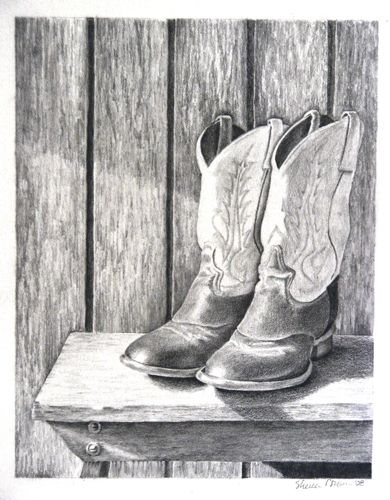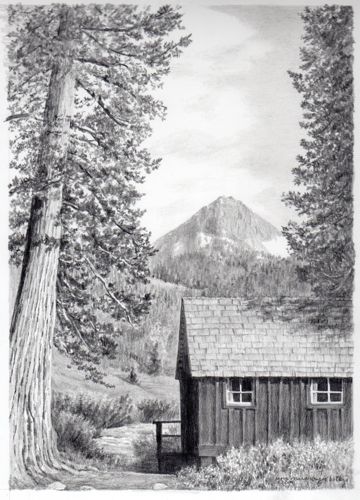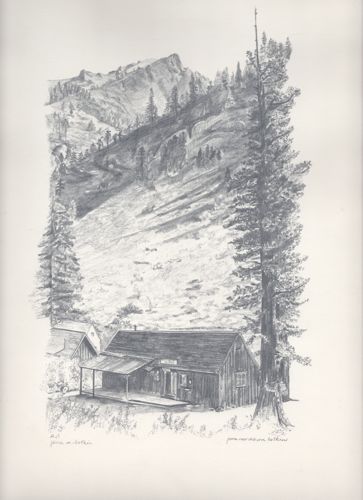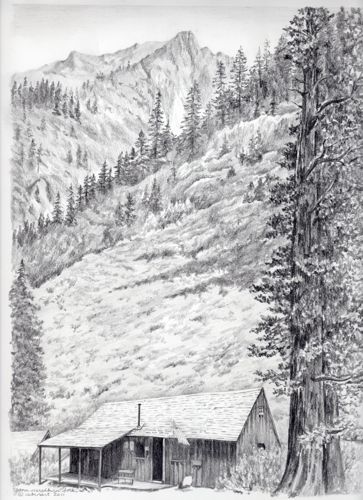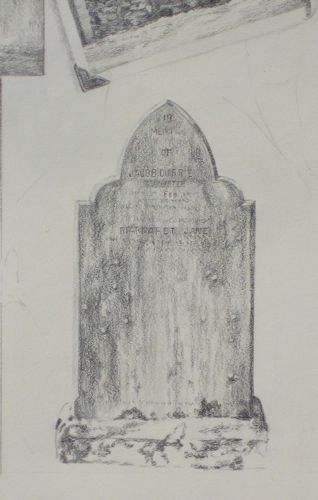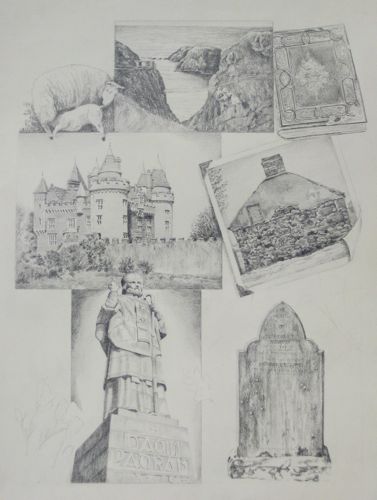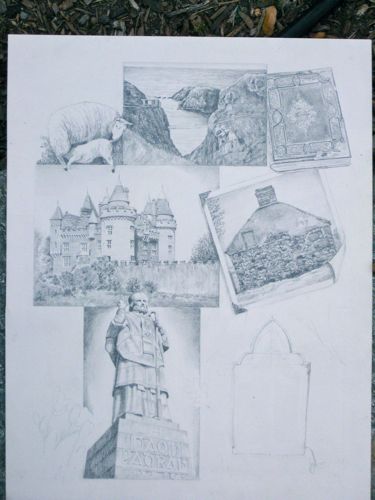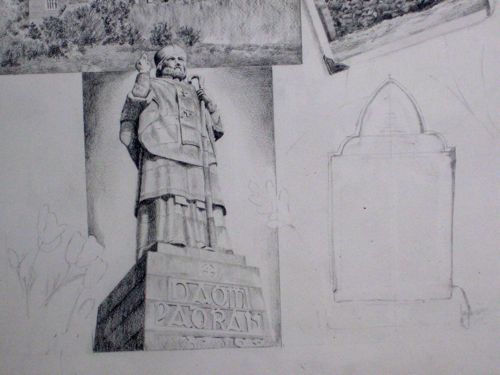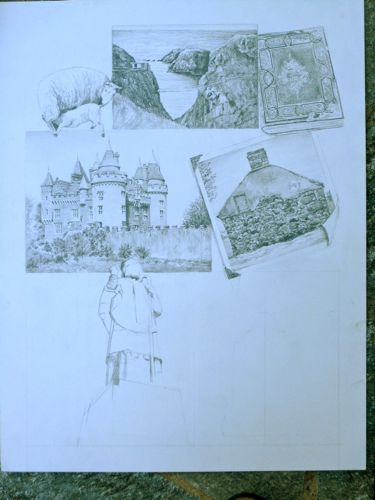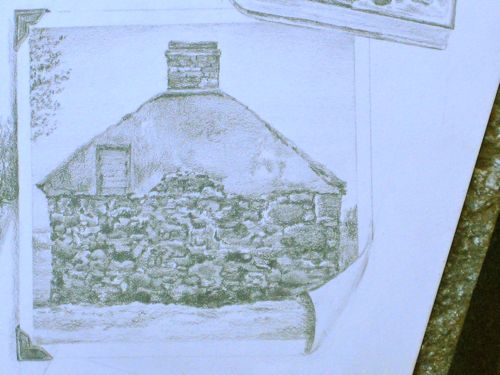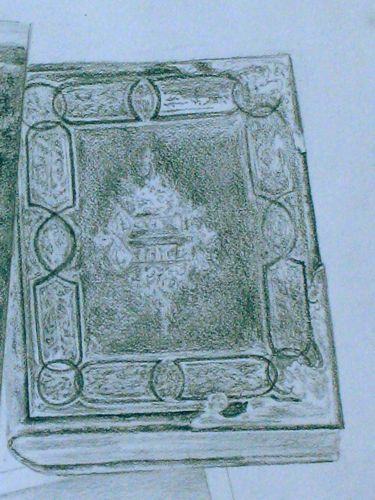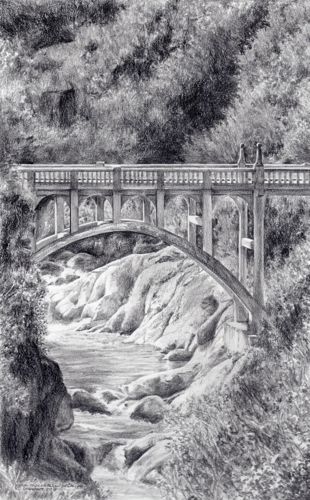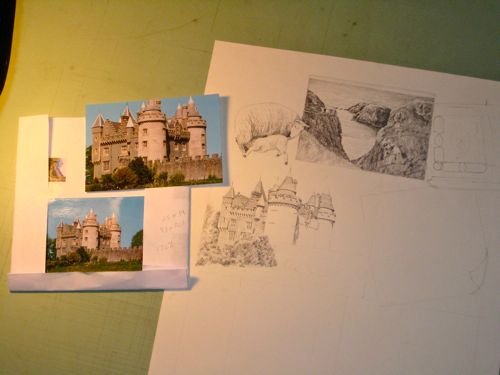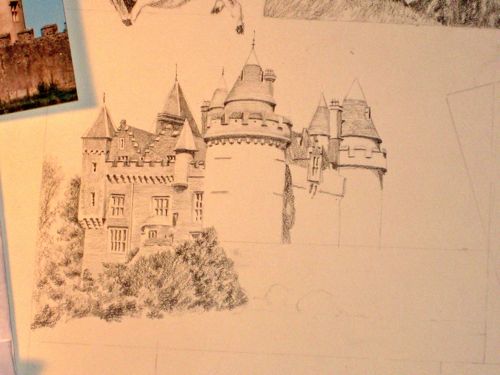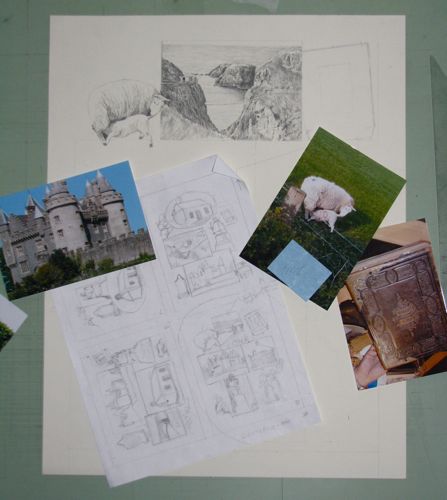Honeymoon Cabin, pencil, 11×14, unframed, $300
A few years ago I took 1/2 a semester of oil painting at a local junior college. I learned more about painting from only the primary colors, and I learned about layering (called “glazing” in Artspeak). I learned that I need more light to see than a 19 year old, that just because a class is labeled something (“Photorealism”) doesn’t mean it is that class (it was Studio painting), that I have very little tolerance for rap “music” (rhythmic and profane chanting would be a more accurate term for it), and that the teacher was still trying to “stick it to The Man”. Hunh? He also had very little tolerance for my ilk – a wannabe without a Master’s of Fine Arts posing as an artist and an art teacher.
That’s me – a poser of the first degree! Gotta have a degree in something to teach, I suppose.
So, Mr. Stick-It-To-The-Man, why are you bitterly and loudly complaining about working at a junior college while I am making and selling art? Hmmmm???
In addition, I learned that there is a real contempt out there for those of us who chose to paint from photos. One of the most influential painters and writers in my so-called art career is Jack White, and he says “All realistic artists either work from photos or they lie about it.”
I do teach people how to draw and they learn and they love it. The only ones who don’t learn are the ones who quit too soon!
I quit the painting class. But, I continue to paint, to learn more about painting by reading and practicing, and I sell lots of paintings. Take that, Mr. Stick-it-to-the-man!
But I’m not bitter. 😎
I believe strongly and whole-heartedly that drawing well is the basis for painting well.
Look at this – Shereen learned to draw!
